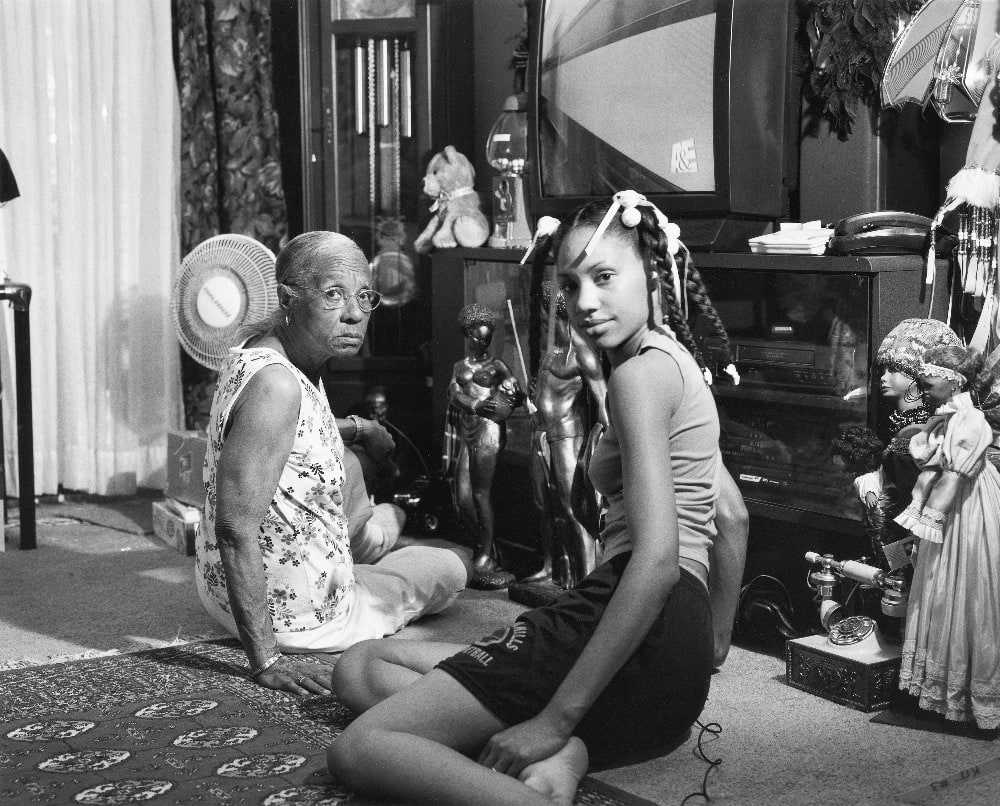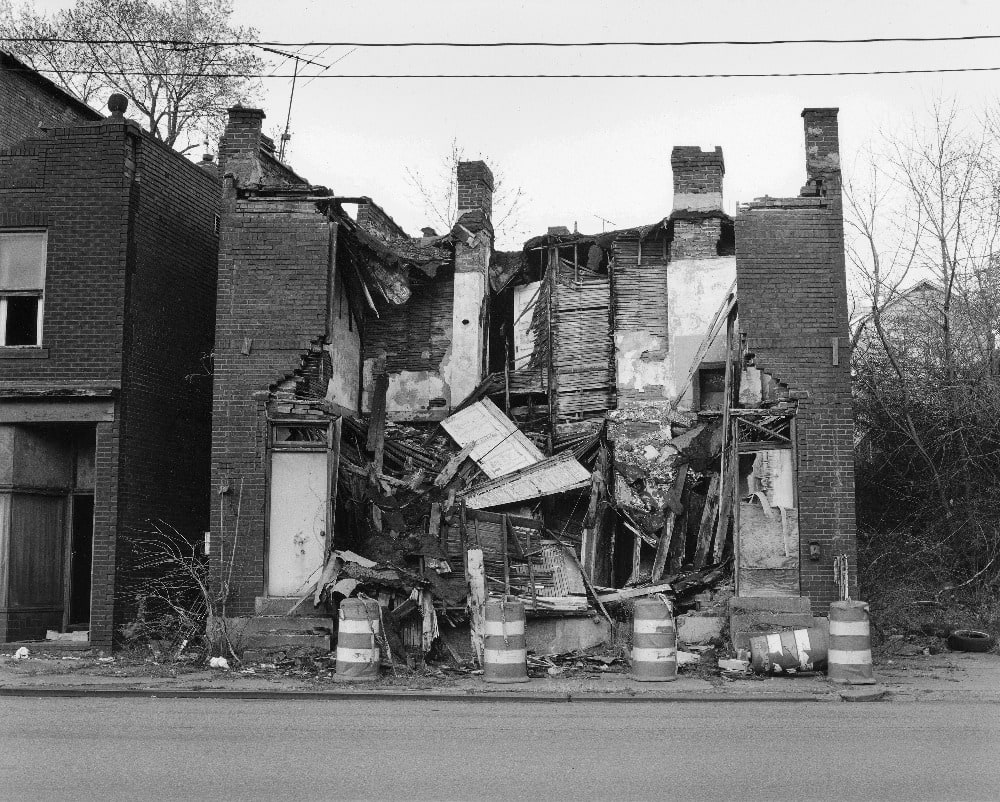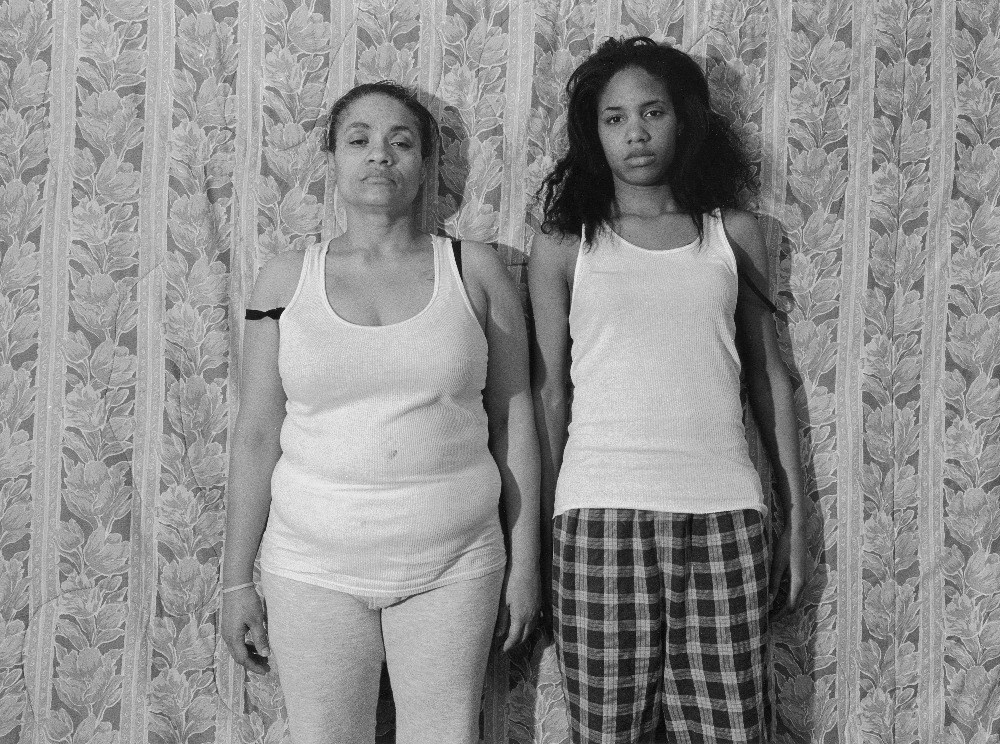LaToya Ruby Frazier: How To Make Your Photos Matter
One of the world’s most important small-town photographers shares lessons on using your camera for a good cause.
 Grandma Ruby and Me, 2005.
Grandma Ruby and Me, 2005.
LaToya Ruby Frazier grew up in the shadow of a steel mill in Braddock, Pennsylvania. The mill, a few miles up the river from Pittsburgh, has been in continuous operation since 1875, and the nearby land has long suffered the ravages of its toxic waste—as have the people living around it. That’s the subject of the 33-year-old Frazier’s unsparing new book, The Notion of Family, which compiles a decade of collaborative portraits of the women in her family alongside photographs documenting Braddock’s broader demise, particularly as it affects its black population. We spoke over the phone about making art in a poor town and how young photographers can learn to wield their cameras like self-protective weapons.
What inspired you to start your project in Braddock? In my photography class at Edinboro University of Pennsylvania, my mentor, Kathe Kowalski, had us read the book Camera Lucida by Roland Barthes. He’s a theorist, and he uses two terms to describe the essence and the power of a photograph: a punctum and a studium. A punctum is a thing that you see in the image that pricks you and moves you. The studium is the subject in the photograph. So our assignment was to find an image that had a punctum and a studium and bring it in.
The next class, everyone is circulating their images, and we get to Dorothea Lange’s iconic photo, Migrant Mother. Everyone was saying, “It’s Dorothea Lange, you know, and it comes from Franklin Delano Roosevelt’s New Deal, during the Great Depression, where the Farm Security Administration sent photographers to the South.” But no one ever said who the lady in the photo was. I wanted to know this woman’s name. Here she is in this iconic American image, but they don’t really acknowledge her. In that very moment, the light bulb went off for me.
I identified with her social and economic struggle because of where I’m from. Her name was Florence Owens Thompson. So I set out asking myself one question: if Florence Owens Thompson could make her own self-portraits, what would they look like? I began collaborating and making portraits with my mother and my grandmother, thinking about how to reclaim our agency, and how to impact the narrative and the history that comes out of Braddock. Historically, there are no stories about women—let alone African-American women—in steel mill towns. They don’t exist.
 Home on Braddock Avenue, 2007.
Home on Braddock Avenue, 2007.
Sometimes when artists consider making political work, the size of the world and its problems can feel overwhelming. Why did you want to focus on a small town? Around the time that I had seen that Dorothea Lange photograph, I also started learning about Gordon Parks. He said that he chose the camera as a weapon to fight all the things he didn’t like about America: poverty, racism, and discrimination. My views are very much in line with his. I grew up in an area known as “the bottom” in Braddock, next to all the industry, next to the railroads, next to heavy truck traffic. It was one of the worst streets because of its proximity to industrial waste, which definitely contributed to my terminal illness, lupus. If you feel disadvantaged, like you’re invisible, like your life has no meaning or value—these are all things that I struggled with.
And these are universal feelings. You could be in Detroit; you could be in Korea; you could be in Palestine, Poland, Chicago—it doesn’t matter. Industries and the economy are controlling our landscape and controlling our workforce everywhere. One way to fight back is with creativity, but to do that you have to look at the situation head-on. You can’t run from it. I would’ve never been able to succeed if I ran from the poverty in Braddock. Instead, I went through it with my camera to analyze the situation as it unfolded. My family was being dismantled and dying in front of me. I didn’t have any power over that. The only way for me to counter it was to make work about it so I could survive.
Your mother, with whom you collaborate, doesn’t have the same art education that you do. Why is it important for art-making to be open to all? Theory is an abstract form; it’s empty unless it’s applied to real life. So I wanted to be like a bridge between the theory I was learning at school and the reality of what my family and I were facing at home. In order to do that, I needed to relinquish the power of being the all-knowing photographer. I had to actually get on the other side of the camera and allow my mother to direct the shots as she felt she needed. There’s a mentality in mass media, and in particular in photography, that only the privileged can make work about the disadvantaged, and that’s absurd. I just think that it’s really important that we tell our own stories and that we create our own representation. Period.
At the same time, you’ve shown work and taught at some major institutions. Why is it important for you to be present there, too? It’s a two-fold thing. One is the fact of me coming from where I’m coming from. All you’re told in the media is that you’re poor; you’re black; you’re a drug addict; you’re of no use to society. For me to receive an award at a place like the Guggenheim or teach at a place like Yale sets a very important example for the students currently still in Braddock who are struggling to find value, to move forward, and to try and save their lives.
The other side is when you go to museums and galleries. People of color, poor people, working class people—we can’t afford memberships to these institutions. The exhibitions that are being put on view are not geared toward the majority of us; they’re geared toward a certain demographic of privilege, and in order to disrupt that, my work has to be in there. It’s a way of bringing them to task to say, “Look, you need to put up work that we can identify with on a museum wall.”
 Momme Portrait Series (Floral Comforter), 2008.
Momme Portrait Series (Floral Comforter), 2008.
A lot of young photographers go into communities besides their own with every intention of making meaningful, productive photos, but, as outsiders, many don’t get it right. How could they do better? I have a really simple solution, and it goes back to Migrant Mother and how they completely ignored Florence Owens Thompson. The way we can correct the misstep that happened in the ’30s is by not assuming that we have the answer but actually allowing the people in the community to speak for themselves. I’m not saying you have to give them a camera. The number one thing is to listen. Spend time with people before you ever even pull out a camera. Ask people what they need. It could be just as simple as asking someone to pick a place: how do they want to present themselves? Make yourself available and supply your services and your skills and your techniques to someone else, so you can use your talents as a platform for their voice and representation.
Another thing about Migrant Mother is that Florence Owens Thompson never received royalties. She died destitute. Her children were never paid. Artists work diligently to make great images that will be collected by institutions, and if you can get to that level, then you can generate some type of revenue. You have to work really hard in order to accomplish that, so you have to be paid of course, but then you also want to set a percentage aside for the person in that photograph. If people weren’t selfish, it would be very easy to do that.
Your book about Braddock has been published, but you’re still flying back all the time to make more pictures. How do you know when the work is over? Before my mentor, Kathe, passed away from cancer, I asked her, “How will I know if I’m doing the right thing if you’re not going to be there to tell me?” She said to me, “You know that you’re doing the right thing when your work starts speaking back to you. The work takes you where you need to go.” So I would put the work up in the bedroom. Every day I’d wake up, every day I’d go to sleep, and it would be the first and last thing I would see. It was always on my mind.
After my work was in the Whitney Biennial, I could’ve said, “Alright, I’m done with this project.” But I received a phone call because someone saw the work and decided, “We would like to invite you to come to the Berlin Academy.” That’s the work speaking for itself, and it took me to another steel mill town, in East Germany. I go to a new place, and I see Braddock everywhere. I see all the same symptoms and issues in all these countries and all these cities. Other people feel like they can confide in me things they’ve never said to anyone else, because it was hurting for so long and so painful—but they saw it in the photographs. That’s when art and photography transcend everything else. You can’t put a price tag on it, or a declarative description in an art theory book. It’s just something that happens, this spiritual thing that occurs between the photograph, the maker, and the viewer. And you have to trust that it will always be there. The work is never over. You just know that and accept it.